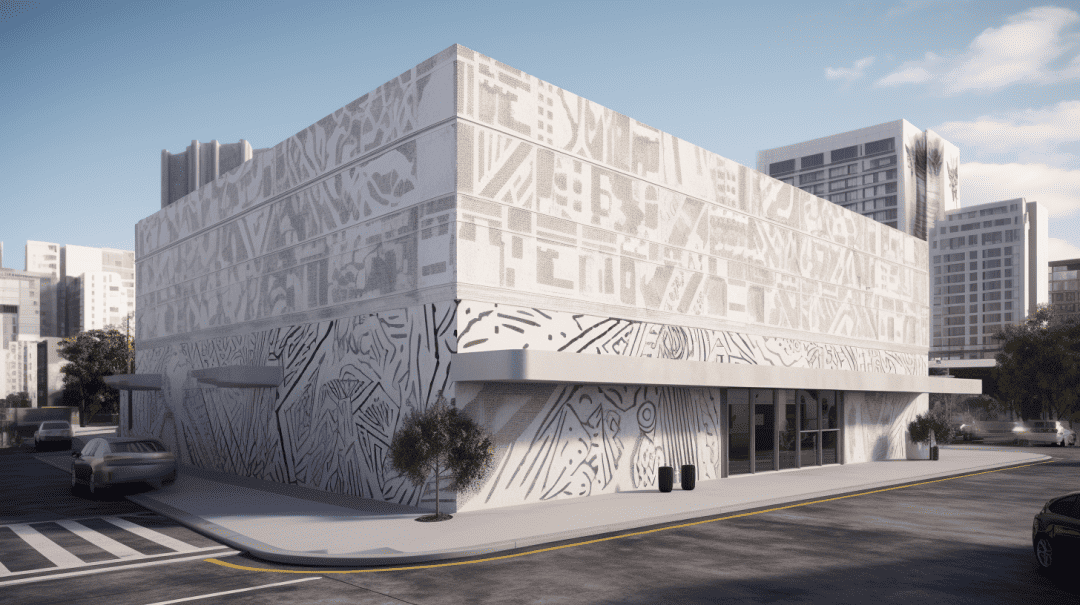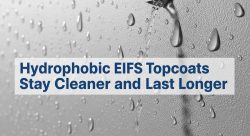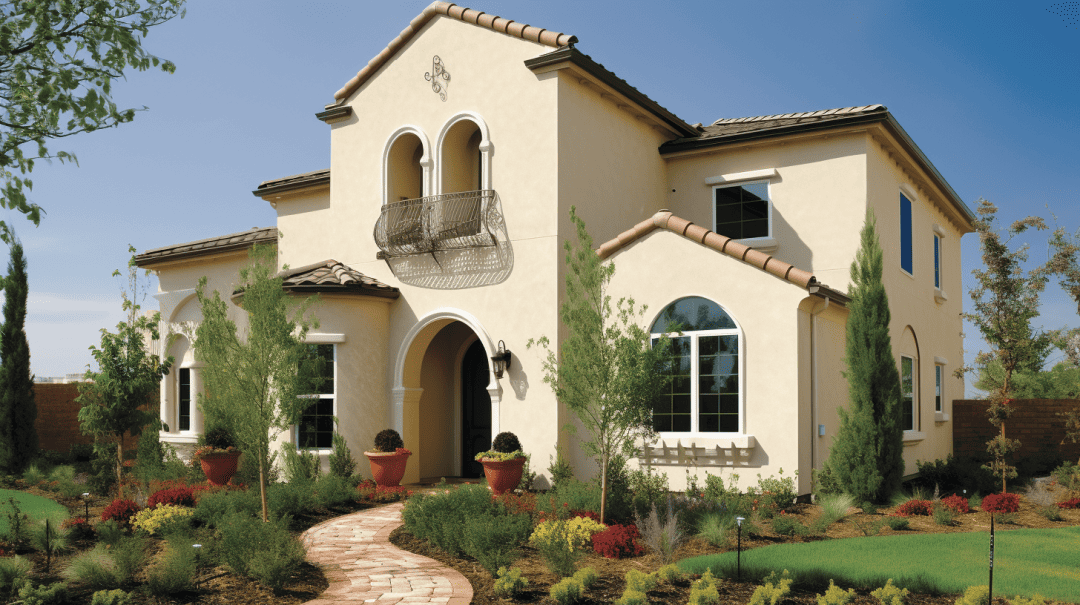Frosty Fallout: How Winter Exposes EIFS Vulnerabilities
Are you feeling winter’s chill? Don’t be fooled! Winter is also the worst time for ignoring EIFS damage. Don’t let the cold temperatures worsen your situation. This article will help you understand why winter is so bad for EIFS damage.
The Science Behind Winter’s Impact on EIFS
Winter’s Excessive Conditions: A Threat to EIFS!
Temperature drops and the freeze-thaw cycle can make moisture retention worse, causing damage to EIFS. Exterior Insulation and Finishing Systems are made of components that absorb moisture easily.
Any cracks or gaps in EIFS give water a way in. When temperatures drop below freezing, trapped moisture expands, leading to structural instability. Colder temps also don’t let wet components dry properly, creating space for mold growth and dampness. Ignoring these issues will only make things worse.
To avoid risks, address existing cracks and gaps with sealants that are compatible with EIFS material. Insulation behind the exterior cladding helps regulate the temperature difference between outdoors and in. Regular maintenance checks by professionals can identify early signs of damage.
Heed the warning and prevent winter from destroying your EIFS system! Crack sealing, insulation upgrades, and regular maintenance checks are key to preserving both functionality and aesthetics of your home.
Understanding EIFS Material Composition
EIFS Material Composition Understanding:
Grasp the components that comprise this synthetic coating system and how they influence performance and durability.
Components & Description:
- Insulation: Enhances energy efficiency and thermal resistance.
- Base Coat: Secures strong bonding between insulation and other layers.
- Reinforcement: Strengthens the system, making it more resistant to impact and cracking.
- Finish Coat: The external layer that safeguards against weather elements and provides attractive looks.
Plus, EIFS also has additives like water repellents and anti-fungal agents for moisture and mold prevention.
Preserving EIFS Durability:
For optimal EIFS preservation during winter months, inspections by experts are essential. They can detect any damage or weaknesses in the exterior finishes before they get worse.
Winter Neglect, Bigger Losses:
If EIFS damage isn’t addressed in winter, this could lead to serious problems. Water infiltration can happen more due to cold temperatures and high moisture, resulting in big structural issues if not fixed.
Don’t Miss Out on Early Repairs:
Protect your property by repairing EIFS damage during winter. Hire professionals for timely repairs to guard your building from further harm and pricey repairs in the future.
By understanding EIFS composition and taking immediate action, you can keep small issues from turning into bigger ones that may cause both aesthetic and insulation damages to your building.
Ice and EIFS: an icy combination that can leave your walls shivering in distress.
The Moisture Menace: Ice and EIFS
Winter may be amazing, but it’s also a time when EIFS cracks get worse due to moisture. This causes a freezing transformation to your building’s exterior.
How Cold Weather Exacerbates EIFS Cracks
Winter brings with it chilly temps. These low temperatures can cause cracking in EIFS systems. Thermal stress from the cold weather makes the material shrink, resulting in cold-related damage. Left alone, these cracks can cause serious issues for the structure.
Buckle up, y’all, winter winds and EIFS walls have a frosty love-hate bond that’s colder than a snowman’s heart.
Winter Winds and Their Effect on EIFS Walls
Winter’s Biting Winds can harm EIFS walls. They weaken the barrier of protection, allowing wind-driven rain to penetrate. This can lead to moisture damage and encourage mold growth.
Prevent damage by inspecting regularly and sealing cracks. Adding extra layers of protection like coatings or membranes will also help. These reinforce the exterior protection of EIFS systems, especially on cold winter days.
Insulation gives your home a warm hug in winter, shielding it from EIFS damage. No awkward small talk needed!
The Role of Insulation in the Winter Months
Insulation’s Winter Role: Maximum Heat Retention and Energy Efficiency
In winter, insulation is vital. It acts as a barrier, keeping heat in and cold out. This helps keep your home comfy and lowers heating costs.
Reducing Thermal Bridging
Insulation also helps reduce thermal bridging. This happens when areas with less or no insulation let heat escape. Continuous insulation minimizes this and prevents damage to the EIFS system.
Protecting Against Moisture Intrusion
Insulation safeguards against moisture intrusion during winter. Moisture can seep in and cause mold or damage materials. Insulation acts as a moisture barrier, preventing water from entering and protecting the EIFS system.
Pro Tip:
- Check your EIFS regularly for damage or deterioration. Fixing problems quickly will protect your walls from further damage.
- Prepare for winter by inspecting your EIFS – so you don’t have to feel as cold as you do when you see your ex.
Preventive Maintenance: Pre-Winter EIFS Checks
Before winter arrives, make sure to conduct seasonal inspections of your EIFS to protect against damage caused by freezing temperatures and moisture. Follow this 6-step guide for preventive measures:
- Inspect the exterior of the EIFS facade for any visible signs of damage.
- Evaluate sealants around windows, doors, and other vulnerable areas for cracks and gaps.
- Inspect flashing around penetrations like vents, lights, and electrical outlets.
- Clear away any debris from gutters and downspouts.
- Identify areas prone to water intrusion and apply sealants or repair as necessary.
- Hire a professional EIFS contractor to provide a comprehensive assessment.
Don’t forget the small details and don’t neglect regular maintenance. A study published in the Journal of Building Science emphasizes this. Don’t let your EIFS suffer in the cold – it might turn your house into an ice castle!
Signs Your EIFS is Suffering from Cold Weather
In winter, it’s essential to look for signs that your EIFS may be affected by cold weather. Or else, huge problems may come! Here are a few ways to check your EIFS:
- Look for cracks, chips, or deterioration.
- Feel for cold spots.
- Check for moisture, stains, and mold.
Remember: Ignoring these signs will only lead to more costly repairs. So, inspect your EIFS regularly during winter. That way, you can nip any potential damage in the bud.
Why Professional Inspection is Crucial in Winter
Winter’s coming—it’s time to act! Get an expert inspection to detect and address any EIFS damage. An analysis will identify underlying issues and evaluate the severity of damage, saving you from bigger repairs in the future. Don’t wait until it’s too late; book an inspection now to keep your property safe.
Else is coming! Don’t let her freeze your EIFS in time—schedule a professional inspection before it’s too late. Protect your building from potential problems and save yourself from more extensive repairs down the road.
Winter’s Effect on EIFS Color and Aesthetics
Winter can be harsh on EIFS color and appearance. Cold temps increase the risk of cracking. Moisture and humidity can cause mold growth. Snow, ice, and salt or deicing chemicals can cause fading and discoloration. All these factors can damage the look of buildings with EIFS.
These issues have aesthetic consequences too. EIFS look affects the overall building aesthetics. So, it is important to fix any damage quickly.
For example, a commercial building had neglected EIFS maintenance during winter. It faced discoloration due to prolonged exposure to snow and ice. This faded appearance hurt the building’s appeal and may have lost customers.
This is why addressing EIFS damage in winter is essential. Delaying repair is like ignoring the problem until it melts and smacks you in the face!
Immediate Risks of Ignoring Winter-Induced Damage
Neglecting winter-induced damage to EIFS can be perilous. Compromised insulation can cause moisture penetration and mold growth, leading to health risks and poor air quality. Ignoring repairs during winter can make the damage worse, increasing repair costs.
The risk of long-term damage rises as temperatures drop. Freezing and thawing cycles can further damage the EIFS system, causing cracks and detachment from the structure. This harms the building’s integrity, energy efficiency, and value.
One true story serves as a warning: a business owner who neglected EIFS during winter faced water intrusion when spring came. The repairs were much pricier than if they had taken action promptly.
Don’t let winter-induced EIFS damage become an expensive disaster. Address it quickly to avoid costly consequences.
The Cost Implication of Winter EIFS Neglect
Neglecting EIFS damage in winter can bring significant costs. These include high repair expenses, reduced property value due to deterioration, and increased energy bills. Acting quickly can help avoid these costs and maintain your building’s integrity.
The table below outlines the average costs of winter EIFS neglect:
| Cost Implication | Average Amount ($) |
|---|---|
| Repair Expenses | $2,500 – $10,000 |
| Value Depreciation | 5% – 15% |
| Energy Bill Spikes | 20% – 30% |
EIFS repair expenses can range from $2,500 to $10,000 depending on the damage. Plus, property values may decrease by 5% to 15%, and energy bills could spike up to 20% to 30%. These costs stress the need to address any damage as soon as it is noticed.
A real-life example demonstrates the consequences of neglecting winter EIFS damage. In a commercial building downtown, the property owner didn’t take action on obvious signs of damage. Consequently, when spring came, extensive repairs were required, costing almost $10,000 and causing prolonged tenant disruption.
This emphasizes the importance of prompt intervention. Taking action as soon as damage is spotted can prevent further deterioration and lessen potential losses. Get your EIFS in shape this winter, or it’ll give you frosty looks when you least expect it.
Maximizing EIFS Lifespan: Winter Care Tips
Maximizing the Longevity of EIFS: Cold-Weather Care Recommendations
- Perform maintenance checks regularly.
- Implement moisture management strategies.
- Conduct sealant inspections.
- Protect EIFS from harsh weather.
- Remove ice buildup to avoid damage.
- Seek professional help for repairs and renovations.
Essential year-round: Regular maintenance, moisture management, and sealant checks.
Pro Tip: Follow these winter care tips to prolong EIFS lifespan and make sure it’s durable during cold weather.
Hiding a cookie from Cookie Monster? Can’t be done without proper insulation.
Ensuring Energy Efficiency Amidst Cold Snaps
Winter Weather: A Threat to Energy Efficiency
Cold snaps are a challenge. To preserve energy efficiency, thermal performance must remain optimal. Temperatures drop, weather gets harsh. Insulation system must be kept intact.
Well-maintained insulation helps conserve energy and reduce heating costs. Neglecting EIFS damage in winter can cause long-term consequences. Addressing EIFS damage promptly is key.
EIFS serves a functional purpose. It’s a weather barrier that prevents heat loss and air infiltration. Cracks or gaps can compromise these benefits. Resulting in higher heating expenses.
An example of this: Years ago, a commercial building owner failed to address winter-related damage. Severe winter weather caused moisture intrusion and mold growth. Remediation was costly and disrupted business operations.
Spring brings flowers and sunshine. But, Mother Nature shines a spotlight on all the EIFS damage you thought you could ignore during winter.
Why Spring Reveals the Worst of Winter’s Wrath on EIFS
Winter is tough on EIFS. Spring reveals how much damage was done during the cold months. Repairing and maintaining EIFS now can stop further deterioration. It’s essential to preserve the integrity and longevity of EIFS structures. Hire professionals for an evaluation and restoration. This will ensure optimal performance for years.
Frequently Asked Questions
Why is winter the worst time to ignore EIFS damage?
Winter is the worst time to ignore EIFS (Exterior Insulation and Finish System) damage because the harsh weather conditions can exacerbate the problem. Freezing temperatures, snow, and ice can cause further deterioration, leading to more expensive repairs in the future.
What are the common signs of EIFS damage during winter?
Common signs of EIFS damage during winter include cracks, flaking or peeling of the finish coat, water infiltration, and mold or mildew growth. These issues can compromise the integrity of your home and should not be ignored.
Can EIFS damage lead to energy efficiency problems in winter?
Yes, EIFS damage can result in energy efficiency problems during winter. Cracks or gaps in the insulation can allow cold air to enter your home, making it harder to maintain a comfortable indoor temperature. This leads to increased heating costs and reduced energy efficiency.
Are there any safety concerns associated with ignoring EIFS damage in winter?
Ignoring EIFS damage in winter can pose safety concerns. Water infiltration can seep into the building structure, leading to weakened foundations and potential structural damage. Moreover, ice dams can form on the exterior walls, creating a hazard for pedestrians due to falling ice or icicles.
How expensive can EIFS repairs be if ignored during winter?
If EIFS damage is ignored during winter, the repairs can become significantly more expensive. The expansion and contraction caused by freezing temperatures can worsen the damage, requiring extensive repairs or even complete replacement of the EIFS system. It is more cost-effective to address the issue promptly.
What steps should be taken if EIFS damage is noticed during winter?
If EIFS damage is noticed during winter, it is important to contact a professional EIFS contractor for an inspection and repair estimate. Taking swift measures can avert additional harm and shield you from higher repair expenses in the future.





